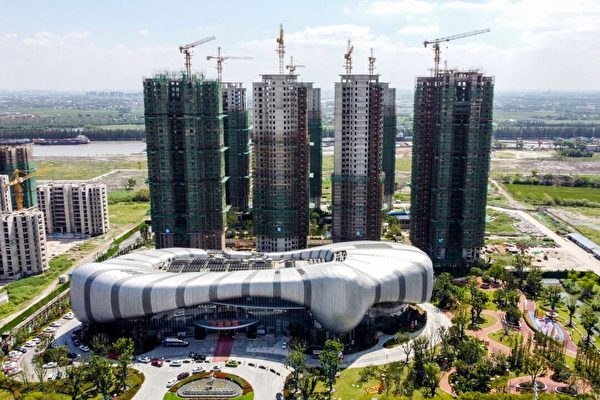Recently, it seems that the Chinese Communist regime is hoping for help from other countries around the world to address its serious economic problems. Due to factors such as the real estate crisis leading to insufficient domestic demand for goods and services in China, the planners of the Chinese government have increased their export efforts to get rid of surplus products, especially in the export of electric vehicles (EVs) and other green energy equipment.
However, unlike 25 years ago when the Chinese Communist government last implemented such policies, other countries in the world are not cooperating. Just like many other old methods used by Beijing’s national leadership to revitalize its economy, no matter how much they hope for its success, this strategy will not work and will not be effective in the future.
The Chinese economy certainly needs help. The problems China is facing are very serious. In 2021, the developer Evergrande admitted a financial failure, triggering a worsening real estate crisis. After prolonged inaction by the Beijing authorities, this crisis has dragged down housing sales and construction activities. As of February, both of these figures were down by 33% and 30% year-on-year, respectively.
Perhaps even worse, this crisis has burdened individuals and financial institutions with a large amount of questionable debt, weakening China’s financial ability to support economic growth. More importantly, the shortage in housing sales has depressed real estate values and subsequently reduced household net worth and confidence, enough to restrain consumer spending. Since local governments rely on revenue from real estate development, this crisis has also made it difficult for them to repay debts and, in some cases, even provide basic services.
In facing this series of problems, the planners in Beijing’s Zhongnanhai have failed in at least two aspects.
First, they have failed to adequately address the financial crisis. They have long ignored this issue, allowing it to spread unchecked. Recent measures taken are just mild interest rate cuts and relatively little funding specifically allocated for “white list” projects to receive help from state-owned banks, which are not enough to alleviate the burden that real estate failure has placed on China’s financial and economic systems.
Secondly, after ignoring the fundamental reasons for the problems in China, the Chinese Communist regime not only failed to take remedial actions but exacerbated the situation by emphasizing manufacturing, making China even more reliant on exports due to insufficient domestic demand.
This export-oriented growth model may have been feasible in the 1990s and 2000s, but the current situation is vastly different. Back then, China had no other choice but to rely on exports. The Chinese economy was still undeveloped, with minimal consumer demand, and domestic demand came from the construction of essential infrastructure, which could only provide a limited market for Chinese factory products.
More importantly, the global market at that time easily met China’s demands. After all, China only accounted for 2% of global exports back then. However, today, China’s share of global exports has risen to 15%, making it difficult for other economies to obtain more without harming their own interests. The current situation is not conducive to China replaying the game it started 25 years ago.
Now, the reluctance of the world to cater to China’s demands is becoming increasingly apparent. The United States has already imposed high tariffs on Chinese imported goods and is now considering additional tariffs on electric vehicles, batteries, and other green energy products, even steel, to protect its domestic industries.
The European Union has complained about China dumping cheap electric vehicles on its market and is considering imposing retaliatory tariffs. The UK has complained about a flood of Chinese tractors and construction machinery entering the country, apparently due to the decline in domestic demand for such products caused by the recession in the Chinese construction industry. London is launching an anti-dumping investigation. The UK has also raised complaints about electric motorcycles.
This resistance is not limited to developed economies. Emerging economies such as Brazil, India, Indonesia, Chile, and Mexico have all complained about China’s dumping in steel, ceramics, and chemicals. Chile is considering imposing a 15% tariff on Chinese steel. India has added complaints about Chinese daily products such as bolts, mirrors, and vacuum flasks in its dumping complaints. Indonesia has also lodged complaints regarding synthetic yarn, stating that the influx of Chinese products is harming its domestic industry.
Since the beginning of this year, governments worldwide have announced over 70 import-related restrictions on China. This is a noticeable increase compared to 50 in 2021 and 2022.
Clearly, things will not develop as they did 25 years ago. This almost entirely export-driven economic model is bound to fail. Perhaps at present, the memories of past successes may blind the planners and decision-makers of the Chinese Communist regime, but as time goes by, reality will make them wake up. At this juncture, the Chinese regime would be better off refocusing on the ongoing real estate crisis under its rule to boost domestic demand, which is the solution for a developed economy, and China is already considered one.
(Note: The translation and rewrite have been done without the original reporter, publisher, editor, and date information.)

